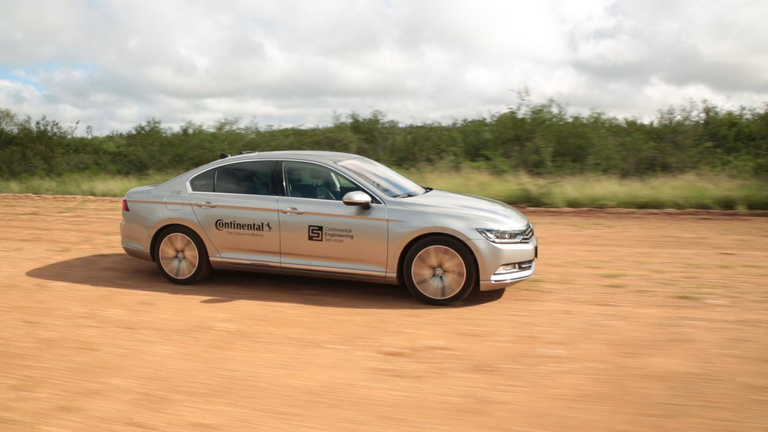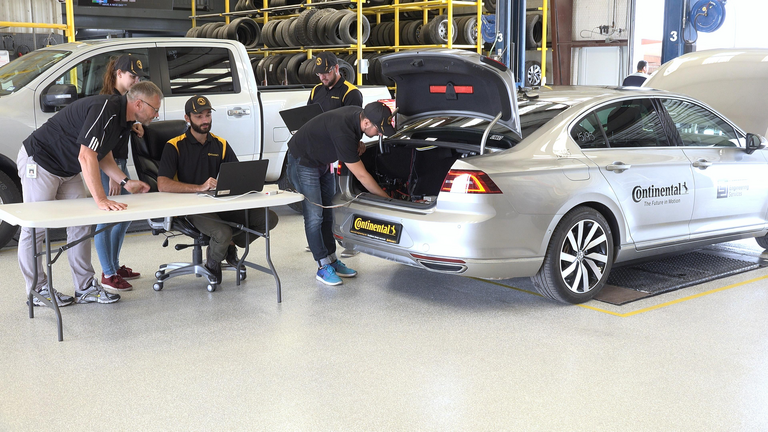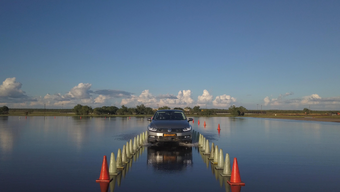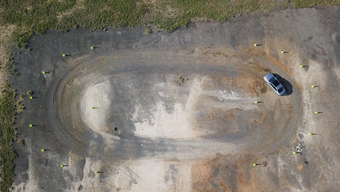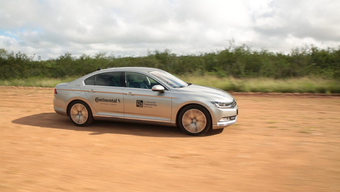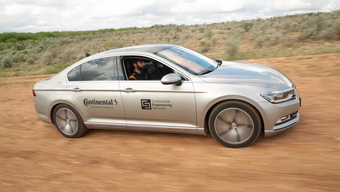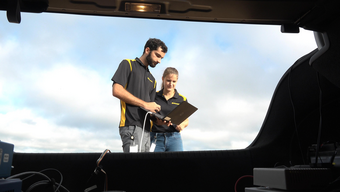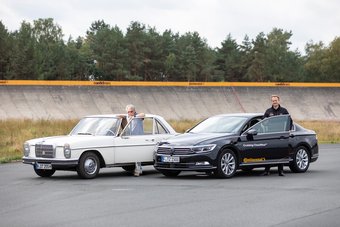Continental Pioneers Tire Tests With Self-Driving Test Vehicles
- Any tire test track can now be driven without a driver
- Automation allows for improved processes and more conclusive results
- Driverless tire tests based on prototypes of Continental’s automated Cruising Chauffeur
- Continental Executive Board member Nikolai Setzer: “Project ensures premium quality”
Hanover/Uvalde (U.S.A.), December 19, 2018. At its test site in Uvalde, Texas, U.S.A., the technology company Continental has commissioned the first driverless tire test vehicle for a wide range of road surface types. The aim is to make the test results for Continental’s passenger and light truck tires more conclusive and minimize the impact of the test procedure on the results. The new test vehicle is based on Continental’s automated Cruising Chauffeur, which was developed for freeways.
The test vehicle is controlled using a satellite-based navigation system. Equipped with camera and radar sensors, the car will be able to react immediately to people, animals, or other unexpected objects on the track, even without a driver. The development team from Uvalde is thereby contributing to making Continental’s Vision Zero strategy for accident-free driving a reality.
“In critical situations, the tires’ level of technology is the deciding factor in whether a vehicle brakes in time,” explains Nikolai Setzer, member of the Continental Executive Board and head of the Tire division. “With tire tests which use an automated vehicle, we achieve highly conclusive test results and thereby ensure the premium quality of our tires.”
Newly developed tire models must be tested under real conditions
One of the challenging tasks in tire production is to carry out quality tests while tires are in use. Newly developed rubber compounds and tire models have to be tested under real life conditions, showing how well they perform on gravel roads, for example. Driving the test vehicles places huge demands on the drivers, as even the smallest deviations on the test track can have a huge impact on the quality and comparability of the test results.
Since 2016, the team led by Thomas Sych, head of Tire Testing at Continental, has therefore been working on the tire test of the future in Uvalde. “We want to automate and thus standardize tire tests to such an extent that we can identify even the smallest differences in the tires,” explains Sych. “The automated vehicle enables us to reproduce processes precisely, meaning that every tire in the test experiences exactly the same conditions. This way, we can be sure that differences in the test are actually caused by the tires and not by the test procedure.”
For these same reasons, Continental engineers already developed an electronically controlled car to automate tire tests 50 years ago. Back then, the vehicle followed a wire that was glued to the track, which limited its use to asphalt test tracks. Today’s prototype can also safely navigate along gravel roads without a driver.
In addition to the significantly improved comparability of the results, the tire test using automated vehicles will also reduce the maintenance work required for the test tracks. Because the vehicle is sent on a route that varies by just a few centimeters each time, the test track is subjected to less wear and tear, thus requiring considerably less maintenance.
“Thanks to close collaboration with colleagues from many different areas of Continental, we have made a lot of progress with our prototype for the tire test. Our focus now is on further developing the necessary camera and radar systems for this special case of off-road routes, so that the vehicle can react appropriately when people, animals, or other vehicles unexpectedly appear on the route,” explains Sych. “We know from our own research, such as the Continental Mobility Studies, that trust is extremely important for the mobility of the future. We are fully aware of this responsibility when developing these new technologies.”
The video and other image formats for download can also be found under Tire Tests With Self-Driving Test Vehicles

